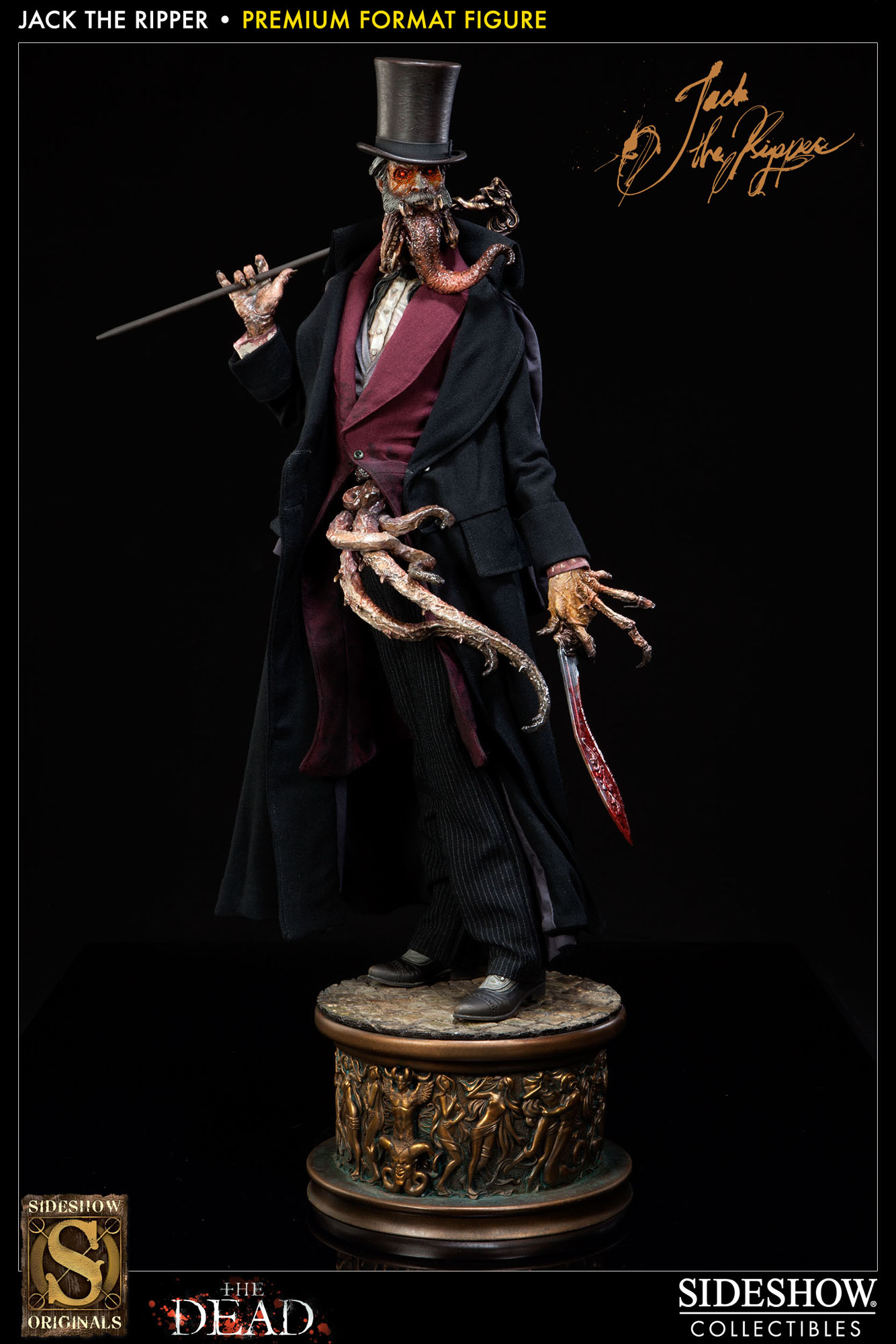A new book published this month promises to provide a long-awaited conclusion to the age old riddle of ‘The Whitechapel Murders’, a series of gruesome slayings that took place between September and October of 1888. The killer, famously known as ‘Jack The Ripper’ was never apprehended and his (or her!) true identity was never uncovered...
However, according to amateur detective Russell Edwards, the most famous murder case of all time has now been
conclusively solved.
Mr. Edwards has spent 14 years establishing his theory and is convinced that it is watertight. “We have definitively solved the mystery of
who Jack The Ripper was,†he told the press.
However, his claims are very far from being either accepted by historians or agreed upon by science...
Since ‘The Ripper’ murdered at least five prostitutes (some experts argue that there were more victims and that the slayings continued unabated until 1891), a large number of historians, amateur detectives and interested parties have indulged in this so-called ‘Ripperology’ â€" and a number of theories as to the identity of the killer have been put forward as a result.
The list of suspects named over the years is a long one. It includes celebrities like ‘Alice in Wonderland’ author Lewis Carroll, Queen Victoria’s physician William Gull, the painter Walter Sickert and even Queen Victoria’s son, Prince Albert Victor. More serious scholars tend to look towards less prominent and sensationalistic theories, however.
Regular Ripper suspects include Scottish abortion doctor and convicted murderer Thomas Neill Cream, who allegedly confessed to the killings as he was about to be hanged (although he was in prison at the time of the murders), Irish-American conman Francis Tumblety, who was arrested on charges connected to the killings, Polish born Seweryn Klosowski, who murdered three of his wives by poisoning and James Kelly, who murdered his own wife in a manner similar to a Ripper killing, escaped Broadmoor asylum early in 1888 (and who may even have committed similar murders in the United States) amongst many others.
Because so many competing theories abound, something special is required to truly make an impact on the subject, or add anything new to the long running discussion. Concordantly, Edwards’ theory involves an element that is guaranteed to add an air of legitimacy to any investigation, DNA.
According to Russell Edwards, the true identity of Jack The Ripper was
Aaron Kosminski, a Polish Jew who lived in the area at the time of the murders and died in an asylum in 1919.
Kosminski immigrated to the UK in the 1880’s and worked as a hairdresser before being committed.

In 1891, (the time when some theorists suggest that the killings ceased) Kosminski was admitted to an insane asylum, probably suffering from paranoid schizophrenia. Kosminski was extremely mentally ill, having been incarcerated twice for insane behaviour. He refused to bathe, would only eat discarded food and suffered from auditory hallucinations; he was also probably a compulsive masturbator.
Russell Edward’s book, ‘Naming Jack The Ripper’ focuses on DNA evidence taken from a shawl that supposedly belonged to victim Catherine Eddowes, who was murdered by Jack The Ripper in September of 1888. He claims to have isolated traces of Kosminski’s DNA from the grisly garment.
The shawl, which was apparently stained with Eddowes’ blood, was allegedly taken from the crime scene by acting sergeant Amos Simpson, who intended it to be a gift for his wife. When his wife (understandably) refused the ghastly, unwashed present, it was stored away and became something of a ghoulish family heirloom.
Unfortunately for Edwards, Mr. Simpson was never documented as being anywhere near the crime scene, which does damage his account somewhat. Furthermore, Scotland Yard’s Crime Museum refused to display the Eddowes shawl in their Jack The Ripper exhibit because they do not consider it to be an authentic piece of evidence.
When the Eddowes shawl came up for auction in 2007, Edwards (who was inspired to become an investigator by the 2001 movie ‘From Hell’ starring Johnny Depp), pounced on the opportunity and purchased it, apparently undeterred by the fact that it does not appear on the inventory of the crime scene and equally undeterred by the proliferation of Ripper forgeries (including a diary) that have supposedly been ‘unearthed’ (and subsequently sold) over the years.
“Here I am with the shawl and possibly the evidence to solve the most unsolvable murder in English criminal history. But where do I start? That was the big questionâ€. Said Edwards, who fortuitously opened The ‘Official’, Jack The Ripper Store (and associated walking tours) in London’s East End this July...
The author enlisted the aid of Jari Louhelainen, a molecular biologist at Liverpool John Moores University, who began testing the blood stained shawl for traces of Jack The Ripper’s DNA...
For his part, Edwards was able to track down living descendents of both Eddowes and Kosminski (but, crucially, no other suspects/victims) and found traces of semen that were a 100% match for Kosminski.
Sadly, Louhelainen’s methodology has not been published in any kind of peer-reviewed scientific journal, which means that the pair’s claims, whilst certainly attention grabbing, are far from scientific certainty. Even
if they are accurate, they only demonstrate that somebody of Kosminski’s family line (he had three brothers) had secreted onto the shawl.
Skeptics include Professor Sir Alec Jeffreys, the man who invented the DNA fingerprint technique, who told The Independent that Edward’s theory was “an interesting but remarkable claim that needs to be subjected to peer review, with detailed analysis of the provenance of the shawl and the nature of the
claimed DNA match with the perpetrator’s descendants and its power of discrimination; no actual evidence has yet been providedâ€.
In addition, even if the DNA has not been contaminated, either in the laboratory or at some other time (which seems unlikely given how many people have handled the shawl over its 120-year history), it is hardly conclusive proof of Kosminski’s guilt.
The evidence would merely suggest a sexual liaison between Eddowes, a known prostitute, and Kosminski, a sexual compulsive, on or around the night that Eddowes was murdered...
On top of all that, the evidence linking an expensive shawl to a prostitute (who was so poor at the time of her death that records show her pawning her shoes) is circumstantial at best.
Mr. Edwards has posed for photographs with the shawl, each time handling it without gloves or any kind of specialist clothing. He is not the only person to have done so in the garment’s long history. Others include the descendents of Catherine Eddowes...
It is also worth noting that, in 2002, author Patricia Cornwell published a book called ‘
Portrait of a Killer: Jack The Ripper â€" Case Closed’, in which she claimed to have analyzed DNA evidence taken from one of the killer’s famous notes and ‘matched it’ to that of the painter Walter Sickert. Once again, the evidence on display was dubious and far from compelling or definitive.
It seems, then, that Mr. Edwards confident boast, “only non-believers that want to perpetuate the myth will doubt. This is it now - we have unmasked him." is premature to say the least.
 If you're not comfortable with the mouthpiece on the wrist, you can also put it on the tie or on the shirt, on your chest. Once you have clipped on the mouthpiece, it is time to put on the radio. Take the wire dangling from the mouthpiece and put it inside your shirt. Take this wire out from the top of the shirt. This way the dangling wires will be completely hidden. Take the earpiece and put it on your ears. Make sure, that it fits tightly and would not fall off when you start to walk. You can put it on either ear. If you are wearing the mouthpiece on the wrist, you will find it comfortable to put the earpiece on the same side ear.
If you're not comfortable with the mouthpiece on the wrist, you can also put it on the tie or on the shirt, on your chest. Once you have clipped on the mouthpiece, it is time to put on the radio. Take the wire dangling from the mouthpiece and put it inside your shirt. Take this wire out from the top of the shirt. This way the dangling wires will be completely hidden. Take the earpiece and put it on your ears. Make sure, that it fits tightly and would not fall off when you start to walk. You can put it on either ear. If you are wearing the mouthpiece on the wrist, you will find it comfortable to put the earpiece on the same side ear. 




